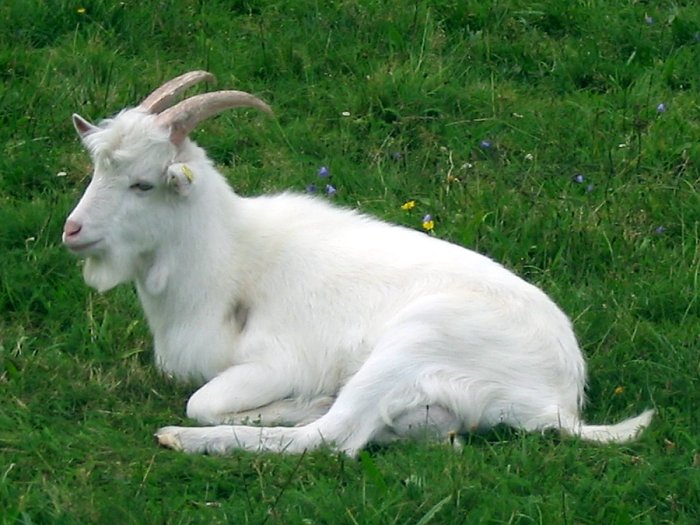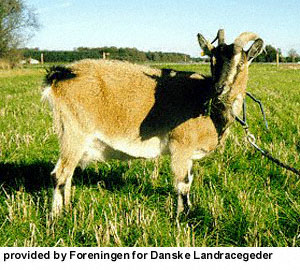Danish Landrace Goats
Also Known As: Dansk Landrace
The Danish Landrace is derived from goats which have been in Denmark since ancient times. At the beginning of the 20th century, some crossing with goats from the German Harz region and Saanen took place. After the Second World War, the number of goats declined rapidly and a group of enthusiastic breeders collected some of the remaining animals. Unfortunately in the following years, many animals were used as recipients for embryo transfer of Angora or Boer goats or for crossbreeding with Boer for meat production. In 1999, only 17 males and 30 females were registered in the herd book. Additionally about 100 males and 800 females exist. Most breeders keep small non-commercial herds for home consumption of milk, cheese and meat or for hobby purpose, with the exception of a few commercial milk producers. Continuing work is necessary to save this rare, but hardy and productive breed.
The Danish Landrace is a medium to large milking goat with an average annual milk production of ca. 800 liters. The animals are short to longhaired and develop a thick hair coat during winter, which protects them well against unfavorable weather. Most animals are horned but polled individuals also exist. There is a wide variation in coloring and the following colors are officially registered:
- Bezoar (brownish with white belly and black and white markings on face and legs)
- Black bezoar (black with white belly and white markings on face and legs)
- Harz color (chamois, brownish with black belly and black markings on face and legs)
- Black
- Blue (bluish gray)
- Pied (black and white or brown and white)
- White
Breeders of the Danish Landrace goat are organized in the: Foreningen for Danske Landracegeder
References
Foreningen for Danske Landracegeder, Petersmindevej 15, DK 4250 Fuglebjerg, Denmark, landged@jubiipost.dk
Mason, I.L. 1996. A World Dictionary of Livestock Breeds, Types and Varieties. Fourth Edition. C.A.B International. 273 pp.



